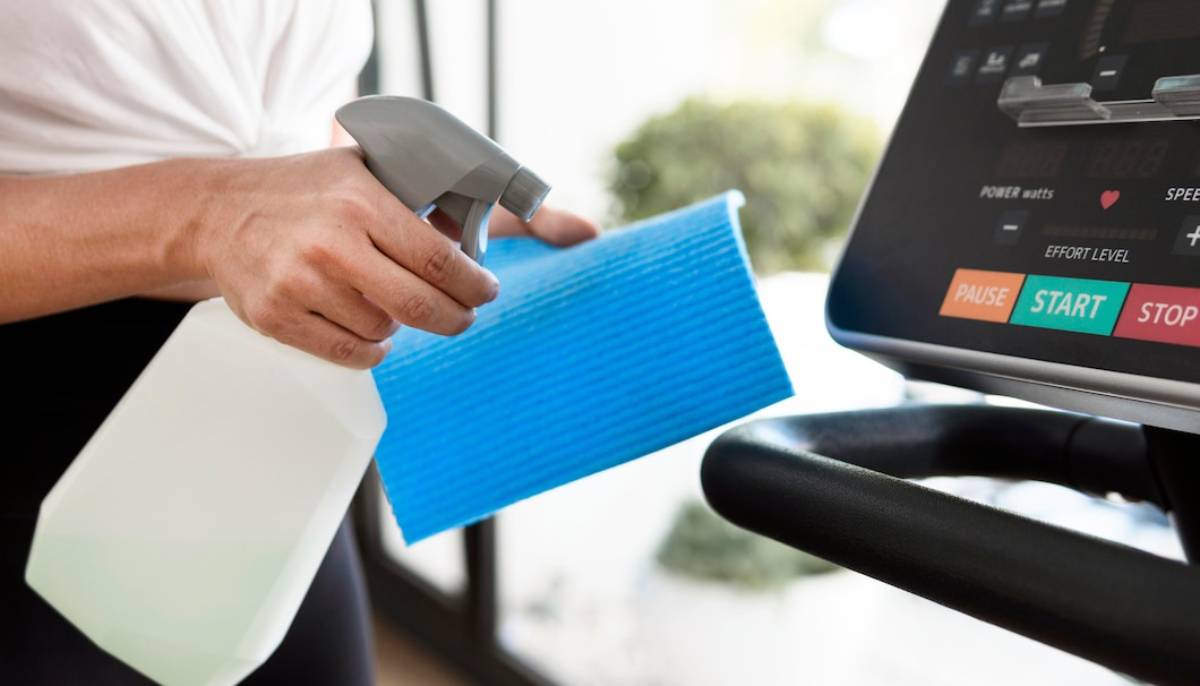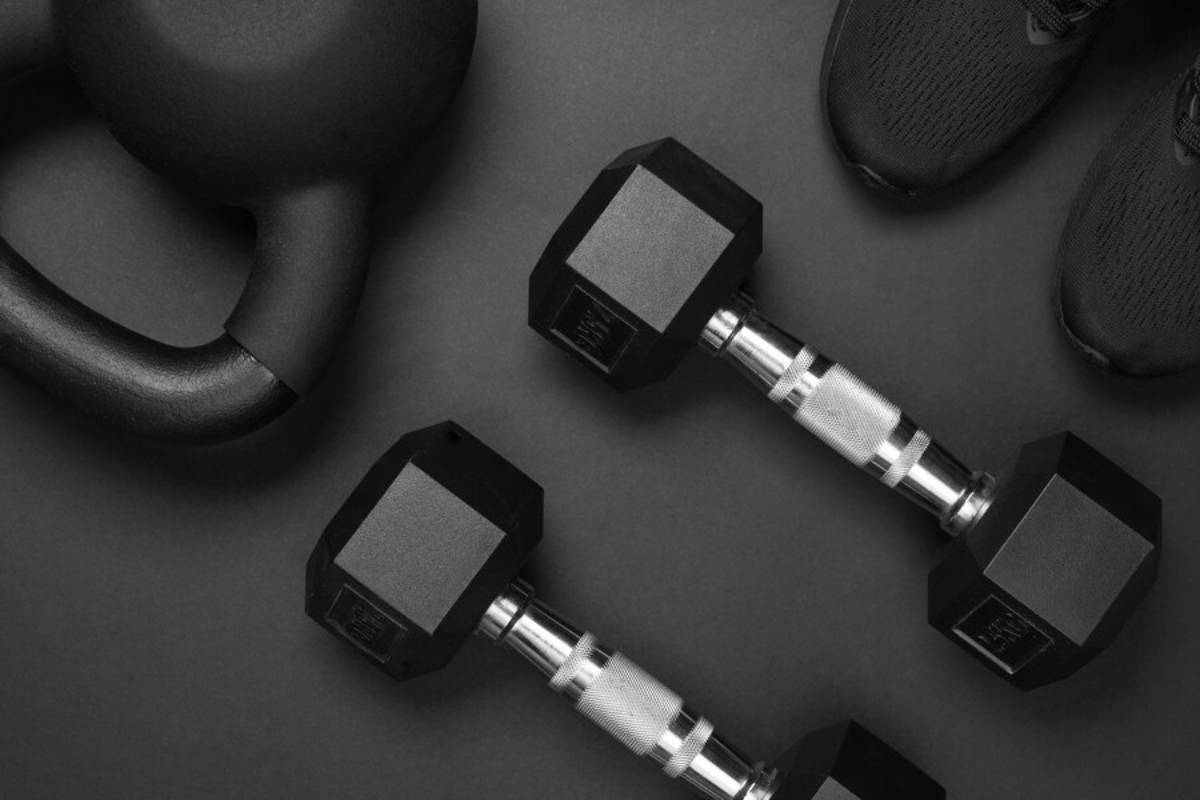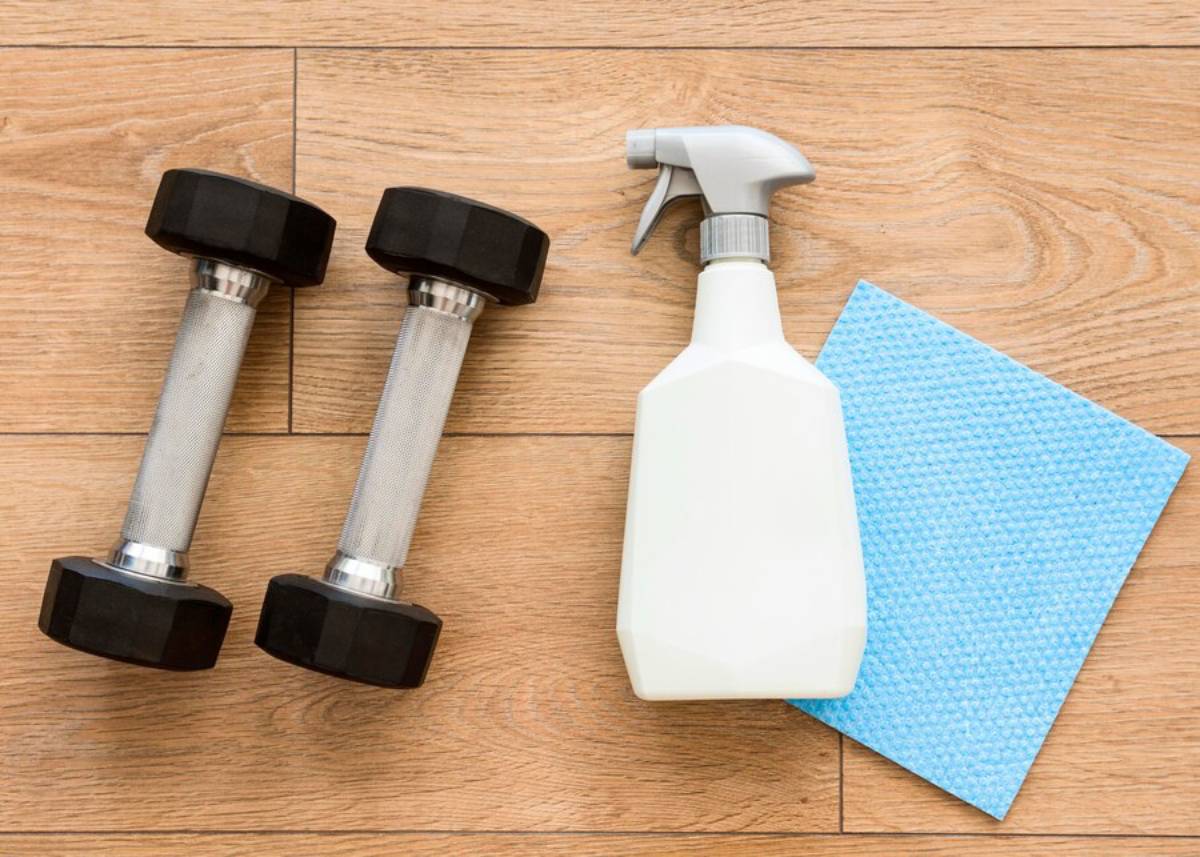
How to Clean and Maintain Your Home Gym Equipment
Owning a home gym is not only about the equipment. Each piece also needs to be maintained in top condition. With all the time we are spending in our home gyms, it is vital to clean and maintain our fitness equipment. Read on to find out why home gym hygiene is so important. It provides professional advice and simple ways to keep your kit in perfect shape.
Why Cleaning and Maintaining Your Home Gym Equipment Matters

Home gyms are a fixture for fitness buffs now, combining convenience and privacy. Your investment in gym equipment can go down the drain if you don’t maintain it properly. And again, regular cleaning makes your equipment last longer. Lastly, keep your gym area clean and sanitised from germs and bacteria on surfaces.
Clean fitness gear not only keeps grime away but also enhances your workout experience. Imagine lifting weights with grips that stay sweat-free, or walking on a treadmill that glides quietly. Equipment maintenance can prevent compound fractures from faulty machinery. In this way, your workouts will be more effective and pose less risk.
Understanding the Core of Home Gym Hygiene
Keeping a home gym hygienic is about more than just wiping down equipment after a session. It also offers a detailed guide on how to clean, disinfect, and take care of your fitness gear. That means knowing what your gear is made of. Use cleaning agents that will not damage it.
Metal weights and bars require different care than rubber- or foam-covered equipment. Using harsh chemicals on certain materials can cause corrosion or damage. This can shorten the life of your gear. Therefore, it’s crucial to be informed about the specific needs of each piece of equipment.
Quick Guide / Checklist for Maintaining Your Home Gym
- Daily Cleaning: Wipe down equipment after each use with a clean, dry cloth.
- Weekly Disinfection: Use a mild disinfectant on high-touch surfaces.
- Monthly Inspection: Check for wear and tear. Tighten loose bolts and screws.
- Lubrication: Regularly lubricate moving parts as per the manufacturer’s instructions.
- Storage: Store equipment in a dry, cool place to prevent rust and damage.
Step-by-Step Guide: How to Practise Home Gym Maintenance
Step 1: Gather Your Cleaning Supplies

- Microfibre cloths
- Mild detergent or soap
- Disinfectant spray (alcohol-based)
- Lubricating oil (for machines)
- Soft brush for crevices
Step 2: Daily Routine
- Wipe Down Equipment: After each workout, grab a microfiber cloth. Use it to clean sweat and dust from all surfaces. This prevents grime build-up and keeps your equipment looking new.
- Check for Loose Parts: Look for any loose screws or bolts. Tighten them to keep the equipment safe.
Step 3: Weekly Deep Clean
- Disinfect High-Touch Areas: Lightly spray disinfectant on handles, seats, and buttons. Allow it to sit for a few minutes before wiping it clean.
- Clean Upholstery: Use a mild detergent to wipe down any fabric or padded surfaces. Rinse with a damp cloth and let it air dry.
Step 4: Monthly Maintenance
- Inspect for Wear and Tear: Examine cables, belts, and other components for signs of wear. Replace any damaged parts immediately.
- Lubricate Moving Parts: Put a little lubricating oil on hinges, bearings, and other moving parts. This helps them work smoothly.
Step 5: Seasonal Overhaul
- Inspect Equipment: Check all equipment closely for rust or damage.
- Professional Servicing: Think about hiring a pro for yearly service to fix any tech problems.
Pro Tip: Using bleach or ammonia-based cleaners can damage equipment surfaces. Opt for alcohol-based disinfectants instead.
Best Practices & Additional Insights
- Create a Maintenance Schedule: Consistency is key. Set reminders for daily, weekly, and monthly maintenance tasks.
- Use Quality Cleaning Products: Good cleaning supplies help keep your equipment in great shape.
- Learn About Care: Knowing how to care for your equipment can save you money on repairs and replacements.
Important: Excess moisture can lead to rust, especially on metal parts. Always dry equipment thoroughly after cleaning.
FAQs

How often should I clean my home gym equipment?
Clean your equipment after each use. Do a deeper clean weekly and inspect everything closely once a month.
Can I use household cleaners on my gym equipment?
It’s best to avoid harsh household cleaners. Use mild detergents and alcohol-based disinfectants to prevent damage.
What should I do if my equipment starts making noise?
Noises can indicate a need for lubrication or tightening of parts. If the issue persists, consult the manufacturer or a professional technician.
How do I prevent rust on my gym equipment?
To stop rust, keep your equipment in a dry place. Also, wipe metal surfaces with a cloth often to get rid of moisture. Apply a rust-resistant spray if necessary, especially on exposed metal parts.
Can I use disinfecting wipes on my gym equipment?
Yes, disinfecting wipes work well for cleaning high-touch spots, like handles and buttons. However, they should not contain harsh chemicals that could damage your equipment’s surfaces.
How do I clean rubber-coated weights?
For rubber-coated weights, use a mild detergent mixed with water and a soft cloth to wipe them down. Avoid using harsh chemicals that could damage the rubber coating.
What should I do if my treadmill belt starts slipping?
Check the treadmill belt. If it slips, adjust the tension as the manufacturer suggests. If it continues, consider lubricating the belt with a silicone-based lubricant.
How can I maintain my exercise bike at home?
Check the bike often for loose bolts and screws. Clean the seat and handlebars. Also, lubricate the moving parts. For the resistance mechanism, refer to the manufacturer’s instructions for maintenance tips.
Is it necessary to call a professional for home gym maintenance?
You can handle basic maintenance yourself. But for complex issues, like broken motors or electrical parts, it’s best to call a pro. They can make sure repairs are safe and effective.
Can I store my gym equipment outdoors?
It’s best to store gym equipment indoors, as exposure to the elements can cause damage over time. If outdoor storage is unavoidable, invest in protective covers for your gear.
Secret Tip: If you have multiple pieces of equipment, rotate their use to ensure even wear and tear.
Conclusion: A Cleaner, Safer Workout Awaits
Maintain your home fitness gear. This ensures a safe and efficient workout space. This guide helps you make your fitness wear last longer. It also keeps your workout spaces clean and hygienic. Try out these practices and feel a difference! For expert tips and advice, sign up for our newsletter. You’ll receive updates on fitness and equipment care.
